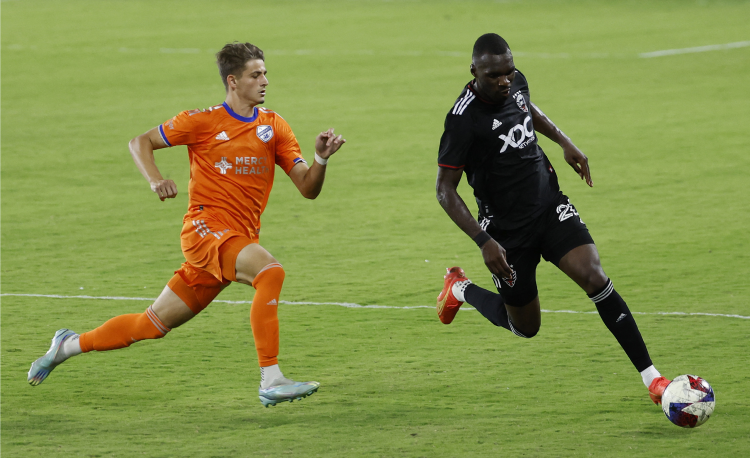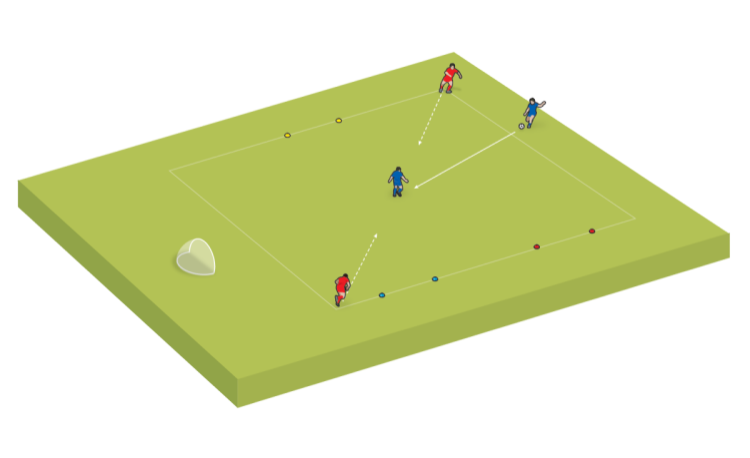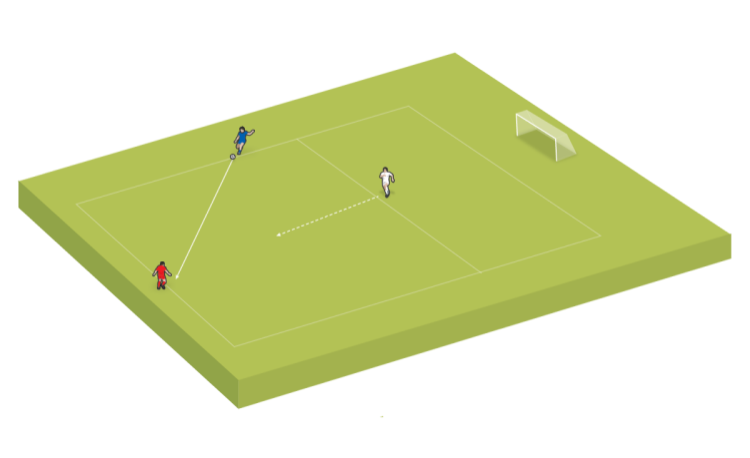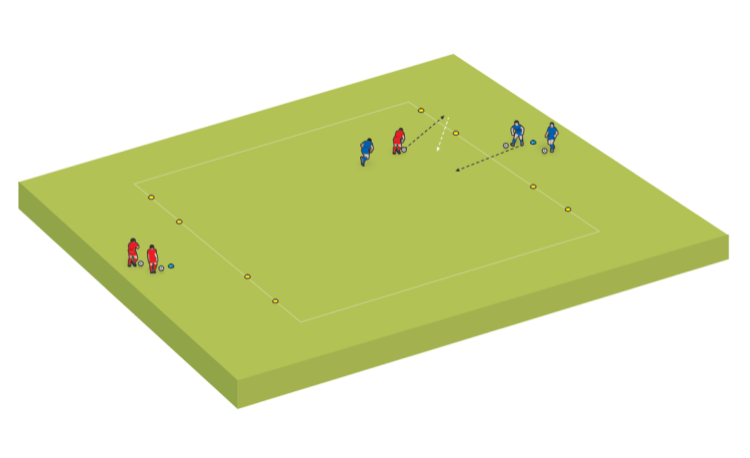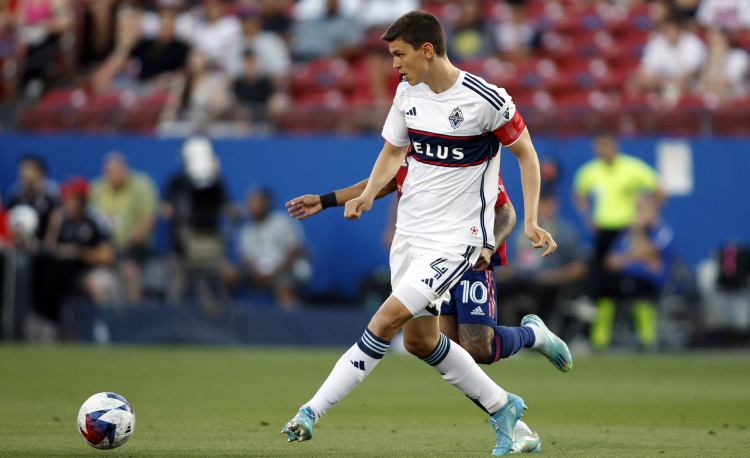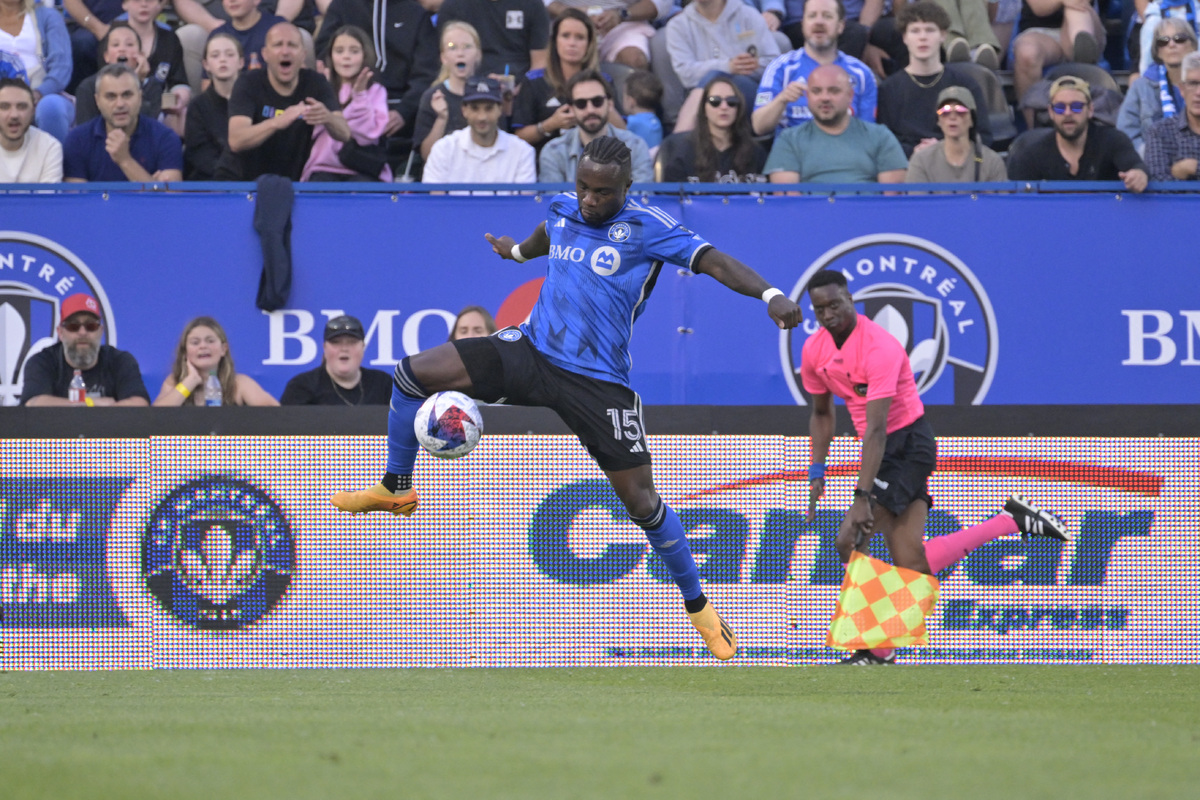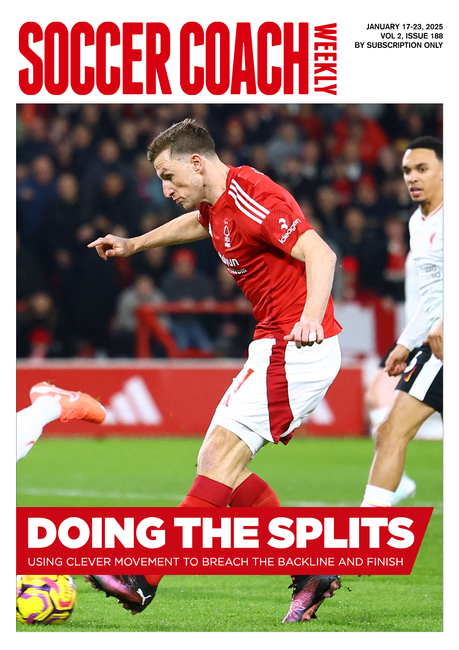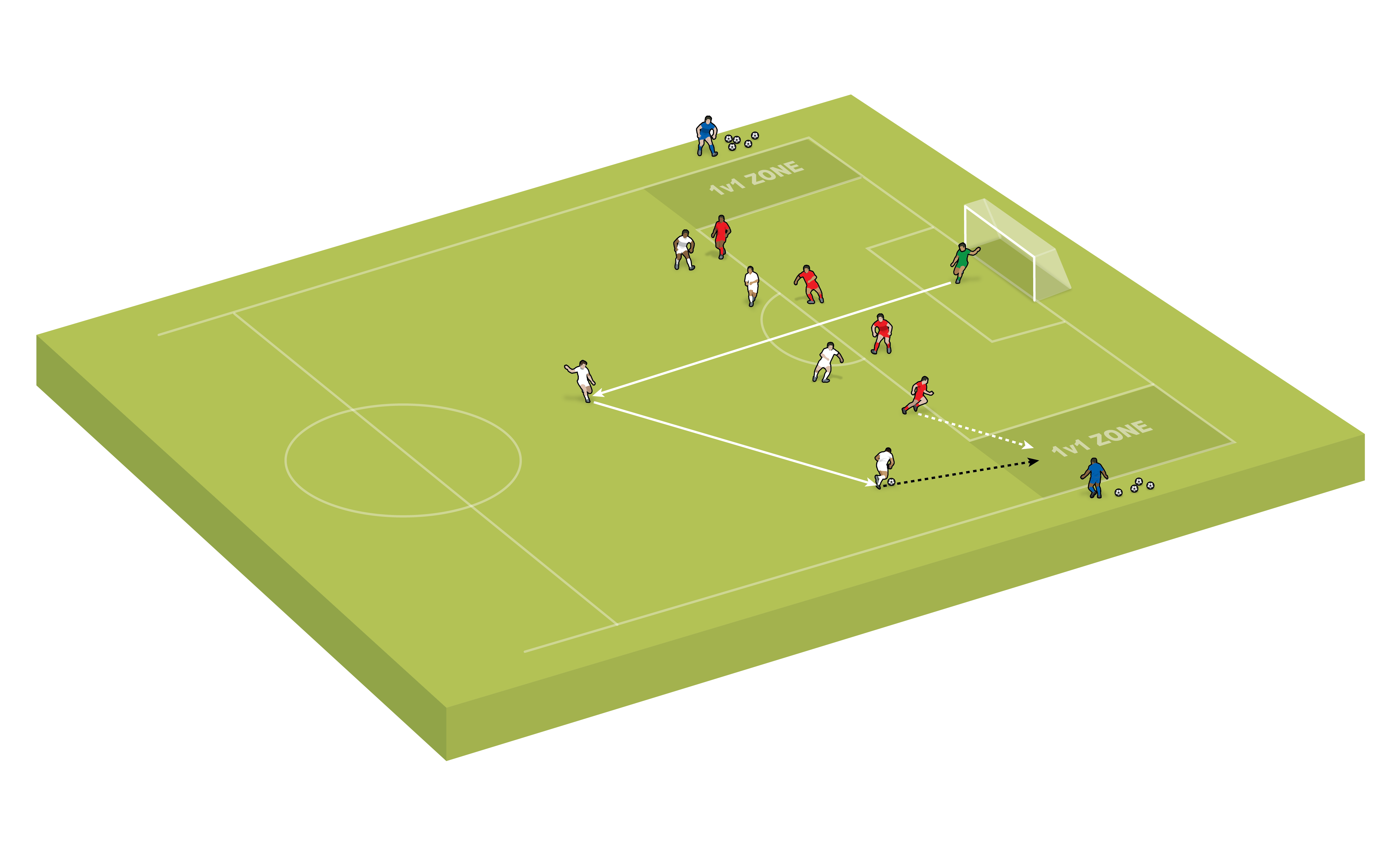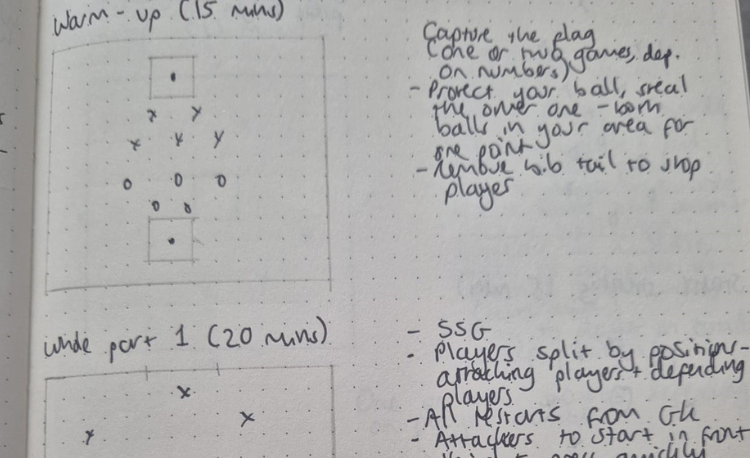What is moving with the ball?
Carl Wild gives first-timers a guide on dribbling and running with the ball – and they are not the same thing.
Moving with the ball involves a player travelling from one area of the field to another while keeping possession.
This could be over a small distance or a much greater one. It could entail having to get past an opponent or multiple opponents, or it could be completely unopposed.
Rarely, though, does it involve players travelling in a straight line. Even when they are unopposed, it is likely they will need to alter the pathway they are on.
Finally, for it to be fully successful, the player will need to complete an additional action at the end, such as a shot on goal, a pass to a team-mate, or a cross.
Why do we move with the ball?
Players will choose or be forced to travel with the ball for a number of reasons, such as to move away from danger or get closer to the opposition’s goal.
Whatever the reason, a player moving with the ball as an individual can have a significant influence on the game, as it will often impact their opponents’ defensive organisation.
Let’s look closer at the reasons for moving with the ball.
"Moving with the ball gives players a chance to get it away from danger..."
To secure possession: When initially gaining possession of the ball, players will sometimes find themselves under pressure from one or more defenders, as the area in which they received the pass has a limited amount of space.
To get the ball away from this danger, players can either look to pass it on to a team-mate or they may decide to travel with it themselves.
Moving with the ball in these situations gives players a chance to get it away from danger and secure possession.
Once they have done so, it also provides the player with more time and space to execute their next action, which makes it easier than if they were under pressure in a congested area of the field.
To beat an opponent: Going past an opponent, particularly if you are travelling towards the opposition’s goal or are already close to it, can be very beneficial.
It forces another opposition player to engage the ball, moving them away from their previous position, meaning their team will not be as organised or as compact as they would like to be.
Forcing another opponent to engage the player with the ball will open up space on the pitch for them or a team-mate.
To move the ball up the pitch quickly: When there is not an opponent to get past, the technique or skill changes from dribbling to running with the ball.
Players usually run with the ball to take advantage of available space. A player travelling with the ball at speed allows a team to move up the pitch quickly with less risk that passing the ball could involve.
As with dribbling, it will also likely result in an opponent having to leave their position to engage the player. Therefore, it will again open up space for the player or their team to exploit.
What different ways of moving with the ball are there?
There are two main ways in which players move with the ball: dribbling or running with ball (also known as driving with the ball).
The two are quite often confused, especially when we are planning a session and working with young players.
However, they are two completely different techniques which require different actions and should be used in different circumstances.
Dribbling
When we refer to dribbling, we usually picture a player going past an opponent who is directly in front of them - typically a wide player attempting to beat a full-back.
"A player travelling with the ball at speed allows a team to move up the pitch quickly..."
Though this situation does definitely occur within a game, it is not the only way in which a player will need to dribble with the ball.
For instance, the direction or angle that a defender approaches the player on the ball will constantly change, as will the amount of space available to the dribbling player and where, specifically, this space is in relation to them and the defenders.
In all instances, though, there are specific requirements for a player to be able to dribble effectively and have a chance of being successful. These are:
Keeping your head up: When dribbling, players naturally look down at the ball, as they are focused on keeping control of it.
This is particularly common with less experienced players, who are building up their confidence in having the ball at their feet and being able to manipulate it.
Instead of looking at the ball, players need to be able to dribble with their heads up so they can see what is around them and identify space, opponents and team-mates who might be an option to pass to.
Knees bent: Having bent knees helps players to stay balanced and allows them to change direction quickly and accelerate when needed.
Small touches and steps: Players should take small touches and steps so they can react quickly and shift the ball when needed.
Using both feet: It is vital that players are able to use both feet when dribbling and that they can use all parts of the foot, including the inside, outside and sole of the foot.
This makes it easier for the player to go in any direction and means it is difficult for defenders to predict where exactly they are going to travel with the ball.
Related Files

Dribbling to beat a defender
When it comes to getting past a defender, such as in the situation of the wide player attempting to beat a full-back, the most effective way is usually to get the defender to shift their body weight one way and then go past them on the opposite side.
To achieve this, an attacker will need to use tricks and disguise.
A defender will only shift their body weight in a certain direction when they think their opponent is going to dribble that way. Therefore, the player on the ball needs to fool the defender into thinking they are going to go one way but then move in the opposite direction. This can be achieved by the player using their body and feet.
By dropping a shoulder, a defender may assume this is the path in which an attacker is going to travel and will probably start to move in this direction, shifting their body weight as they do so.
Alternatively, fake to push the ball one way before taking a touch the opposite way. This is usually done with specific skills or tricks such as a stepover or ‘scissors’ movement.
The final action would be for the attacker to accelerate away and, where possible, keep their body between the ball and the recovering defender, making it almost impossible for the attacker to be tackled.
Running with the ball
There are some similarities between running with the ball and dribbling, in that a player must travel with their head up so they can scan and identify danger and opportunities.
Balance is also key, as there is still a need to change direction when required.
Running with the ball is often associated with players running in straight lines. But sometimes there is a requirement for them to alter the path they are travelling, in order to react to changes in where the space and opponents are located.
These are the key core skills:
Long, powerful strides: The main differences between running with the ball and dribbling are the type and number of touches players take.
To be able to run, a player needs to take long, powerful strides. Therefore, they must ensure their touches move the ball out of their feet and away from them.
However, it is also important that the ball does not travel too far away from the player, as they still need to have control of it and be able to manipulate it when needed.
Using the outside of the foot: The area of the foot that players use when making contact with the ball should be the outside of the foot close to the small toe, with the heel up and their toes pointing down.
"A player must travel with their head up so they can scan and identify opportunities..."
This will enable the player to maintain the correct running technique, which will stop them from slowing down.
Developing a player’s moving-with-the-ball skills
The importance of players being able to move with the ball cannot be understated - yet it is also, arguably, the most difficult skill for them to master.
Therefore, it is extremely important they are given lots of opportunities to practice this particular element of the game, especially from a young age.
A player moving with the ball can allow a team to penetrate the opposition’s defensive lines or open up spaces, by forcing defenders out of a position which was helping their team to remain organised and compact. A player moving with the ball can disrupt their opponent’s defensive organisation, making it easier to progress or create goal scoring opportunities.
Newsletter Sign Up
Coaches Testimonials

Gerald Kearney, Downtown Las Vegas Soccer Club

Paul Butler, Florida, USA

Rick Shields, Springboro, USA

Tony Green, Pierrefonds Titans, Quebec, Canada
Subscribe Today
Discover the simple way to become a more effective, more successful soccer coach
In a recent survey 89% of subscribers said Soccer Coach Weekly makes them more confident, 91% said Soccer Coach Weekly makes them a more effective coach and 93% said Soccer Coach Weekly makes them more inspired.
*includes 3 coaching manuals
Get Weekly Inspiration
All the latest techniques and approaches
Soccer Coach Weekly offers proven and easy to use soccer drills, coaching sessions, practice plans, small-sided games, warm-ups, training tips and advice.
We've been at the cutting edge of soccer coaching since we launched in 2007, creating resources for the grassroots youth coach, following best practice from around the world and insights from the professional game.
